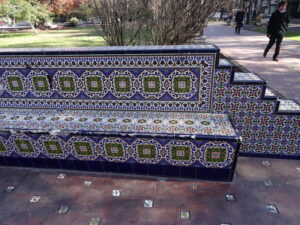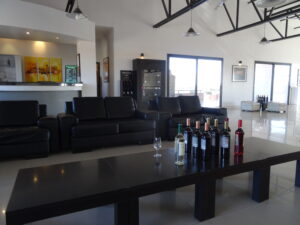
The city of Mendoza was founded in 1561 by the Spanish conquistador, Pedro del Castillo. Prior to the Spanish invasion, the area was populated by two indigenous tribes – the Puelches and the Huarpes. The latter devised an irrigation system that the Spanish further developed and allowed for a bigger population than the arid climate normally would. Today, this system of irrigation trenches (known in Spanish as acequias) is still flowing and it waters the thousands of street trees that shade Mendoza’s sidewalks.
In 1861, Mendoza experienced a devastating earthquake that ravaged the city and killed approximately 6,000-12,000 people. Almost all of the buildings were destroyed, fires caused by severed gas lines raged for days, blocked canals flooded, and landslides reshaped the land.
Less than two years later, the city of Mendoza was rebuilt near to the original location. Applying the catastrophic lessons of the 1861 earthquake to a blank slate to build upon, architects, engineers, and city planners pushed modern styles and pragmatic yet innovative urban designs. Extra large squares and the widest streets and sidewalks in Argentina were constructed for the inevitable repeat of a subterranean fault line revolt. Buildings will likely still crumble but they won’t block the roads when they cave in – ominously practical. Although crime was more of a concern than the earthquakes, I was immediately charmed by the wide, tree-canopied roads and beautifully tiled plazas of the city.

With my flight leaving from Santiago, Chile in just four days, I barely had two days to enjoy this historic city. After days of socializing in San Juan, I was more than content with wandering around the city by myself, stuffing my face with empanadas, and marinating in the warm winter sun.
Besides the historical significance of the region, Mendoza is also known for its olives and more famously, its Malbec wine. Although the grape originated in France, it was introduced to Argentina in the mid-19th century and has become a national variety. One of my joys since crossing into Argentina has been the availability of quality Malbec for a fifth of the price I would pay at home. Given my proclivity for the purplish red nectar and that I was in the Malbec capital of the world, I naturally signed up for a wine and olive oil tour.

While visiting the olive farms and processing facilities of high-grade, boutique olive oil was more interesting than I expected, the crescendo was obviously the wine. Despite only visiting two of the dozens upon dozens of vineyards, each farm we passed was artfully presented with inviting and thoughtful architecture and acres of neatly maintained rows of crops. Samples of the velvety liquid were compared, contrasted, sniffed, slurped, and politely gulped with joy. Although not a huge wine drinker, I could easily spend a week as an enotourist in Mendoza’s vineyards.

Returning to my hostel with a mild buzz from the vineyard tour, I packed up my loose ends before any potential wine headache kicked in. Although I was excited to be heading to a new country tomorrow, I wasn’t ready to leave Argentina – it was wonderful. Thankfully, I knew I would be back in six or seven months to continue on this journey. In the mean-time, I had to get some sleep. I wanted to be awake for my seven hour bus ride through the Andes, for Santiago was beckoning!
Up next, Chapter 19: Flying Back from Santiago
Start the journey from the beginning: Introduction









